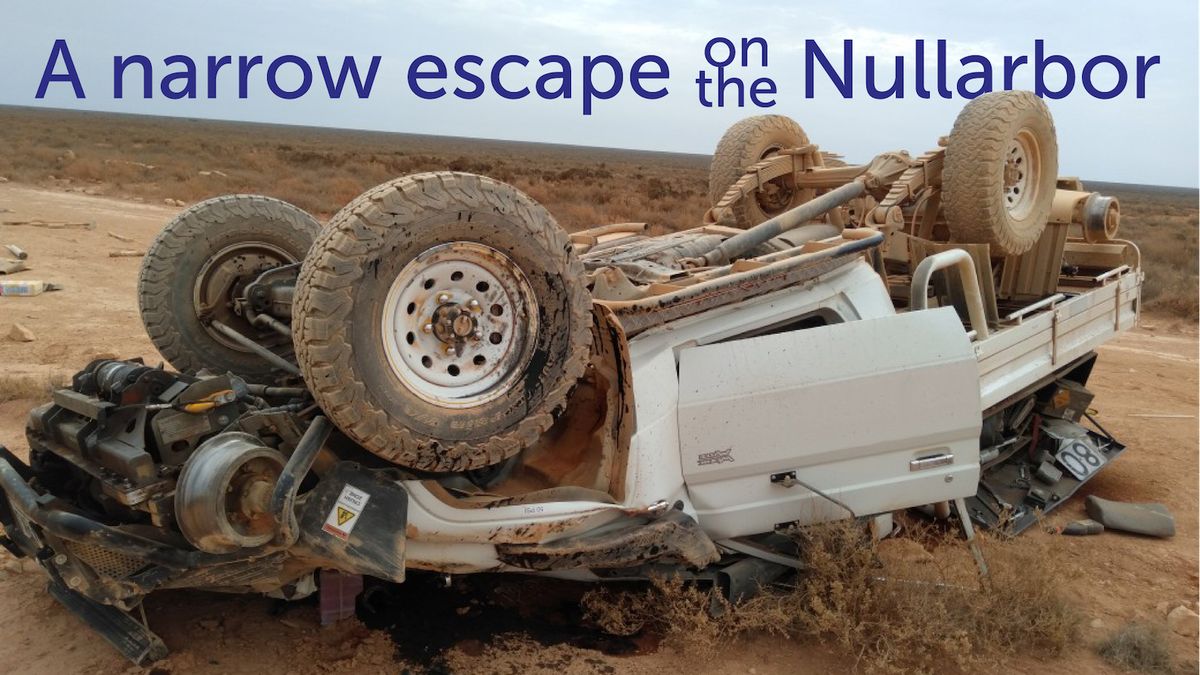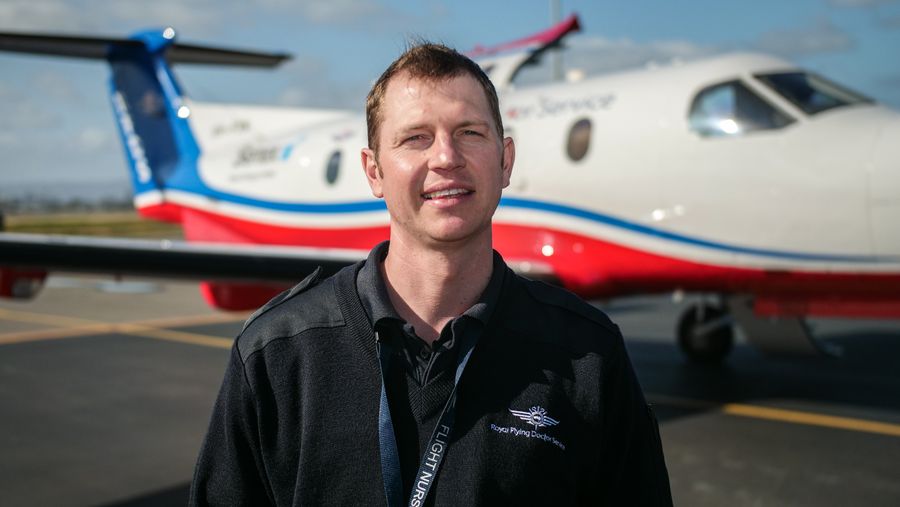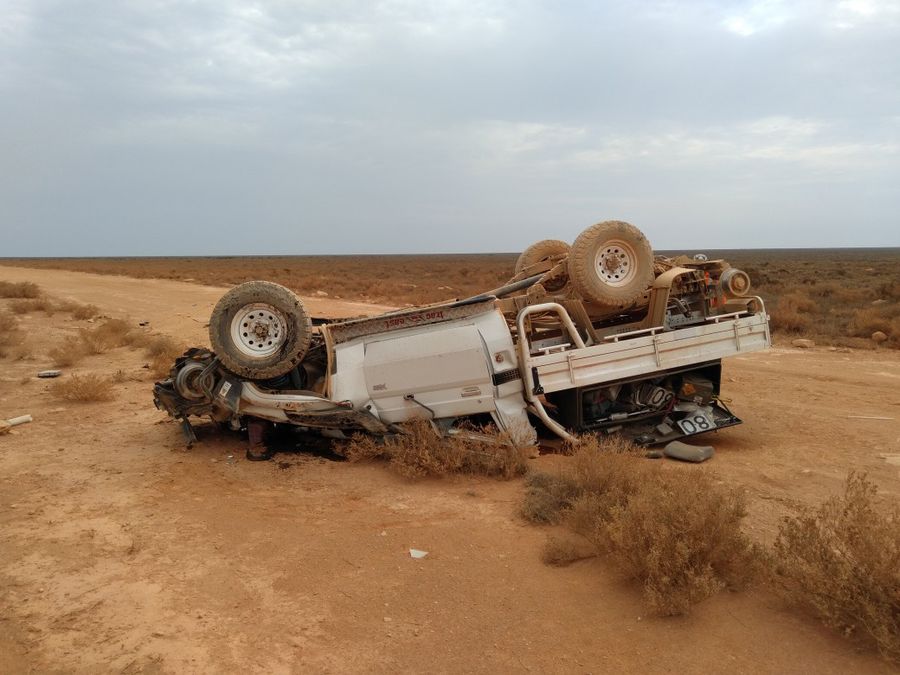
Chris Franks is lucky to be alive after he rolled his vehicle near Cook, South Australia. Flight Nurse Cameron Sims tells his story.


It’s a Sunday night. You’re driving on a stretch of road you’ve driven hundreds of times before. The balmy summer night air is blowing through the cabin of your car. Suddenly, you’re lying upside down, against the crushed roof of your vehicle. Within no time you’re in the back of an aeromedical aircraft being flown to Adelaide for specialist medical treatment.
Imagine lying in a car wreck in the middle of nowhere, with no hope of immediate medical aid. I personally can’t think of anything more terrifying.

In December 2019, as I came to work for my night shift we received an urgent call concerning Chris Franks, who had been involved in a serious car accident on a dirt road at Cook, on the Nullarbor plain, close to the Western Australia border. I was tasked immediately, as every second counts.
I received a photograph which showed a four-wheel-drive laying on its roof. It was clear that the vehicle had rolled over two or three times, completely crushing the compartment.
Chris could not be reached by phone; and the Manager of his accommodation, Hayley Sunman, drove some 107 kilometres along the dirt road into Cook, eventually coming across the wreckage. Hayley recalls the situation as being critical and feared for Chris’s well-being.
Hayley explains: “The car was absolutely trashed. It was scary when I saw him, he had a severe head wound which was swelling every minute, with blood coming from his ear and his head“.
Hayley organised loading Chris onto the back of a ute and drove him back to Cook, immediately contacting the RFDS. RFDS Adelaide Doctor Clive Hume spoke to Hayley and gave instructions on how to stem the bleeding and stabilise Chris by stacking towels on the side of his head. I kept in touch with Hayley en route to monitor his condition.
Once I was tasked, it became clear it was going to be a night landing, on a dirt airstrip not permanently equipped with runway lights.
Haley’s husband Al prepared the runway in accordance with RFDS procedures, placing battery operated lanterns 90 metres apart down the runway with green lights at the end. Al also illuminated the runway’s windsock with the lights from his ute to assist the pilot in landing. Of course, everything went as planned and we landed smoothly.
At the airstrip we were met and taken to assess Chris. Seeing him for the first time, it was clear he was in a great deal of pain. I was able to quickly insert an intravenous line and administer some pain relief and further assess him for any significant or life-threatening injuries.
Once we managed his pain I was able to transfer him to the stretcher on a ute which we used to transfer him to the aircraft. I found myself on the back of the ute in the middle of nowhere, in the early hours, travelling very slowly whilst tending to Chris. We were then able to load him onto the aircraft and fly him urgently back to Adelaide, managing his pain and keeping him comfortable and calm.

